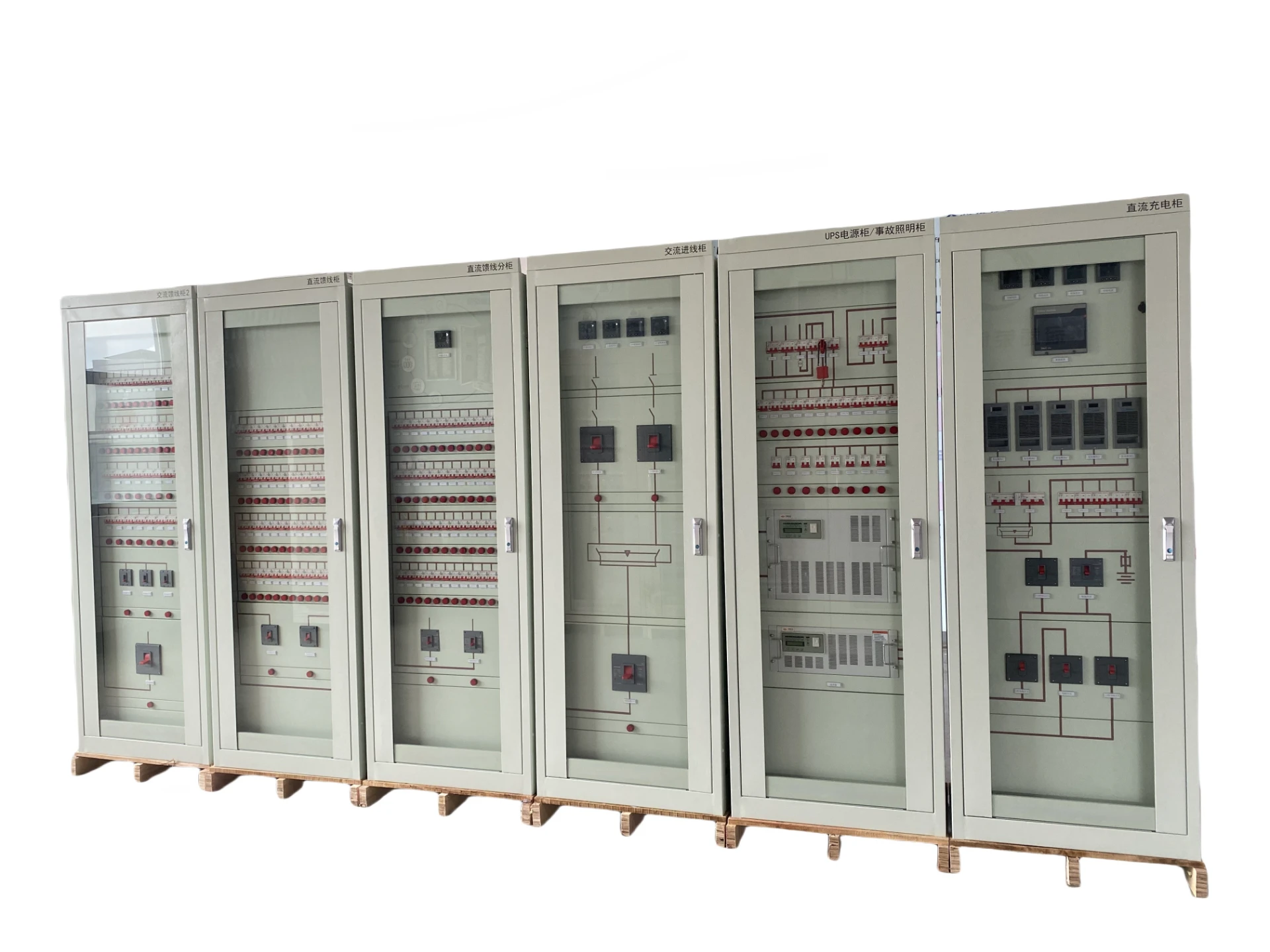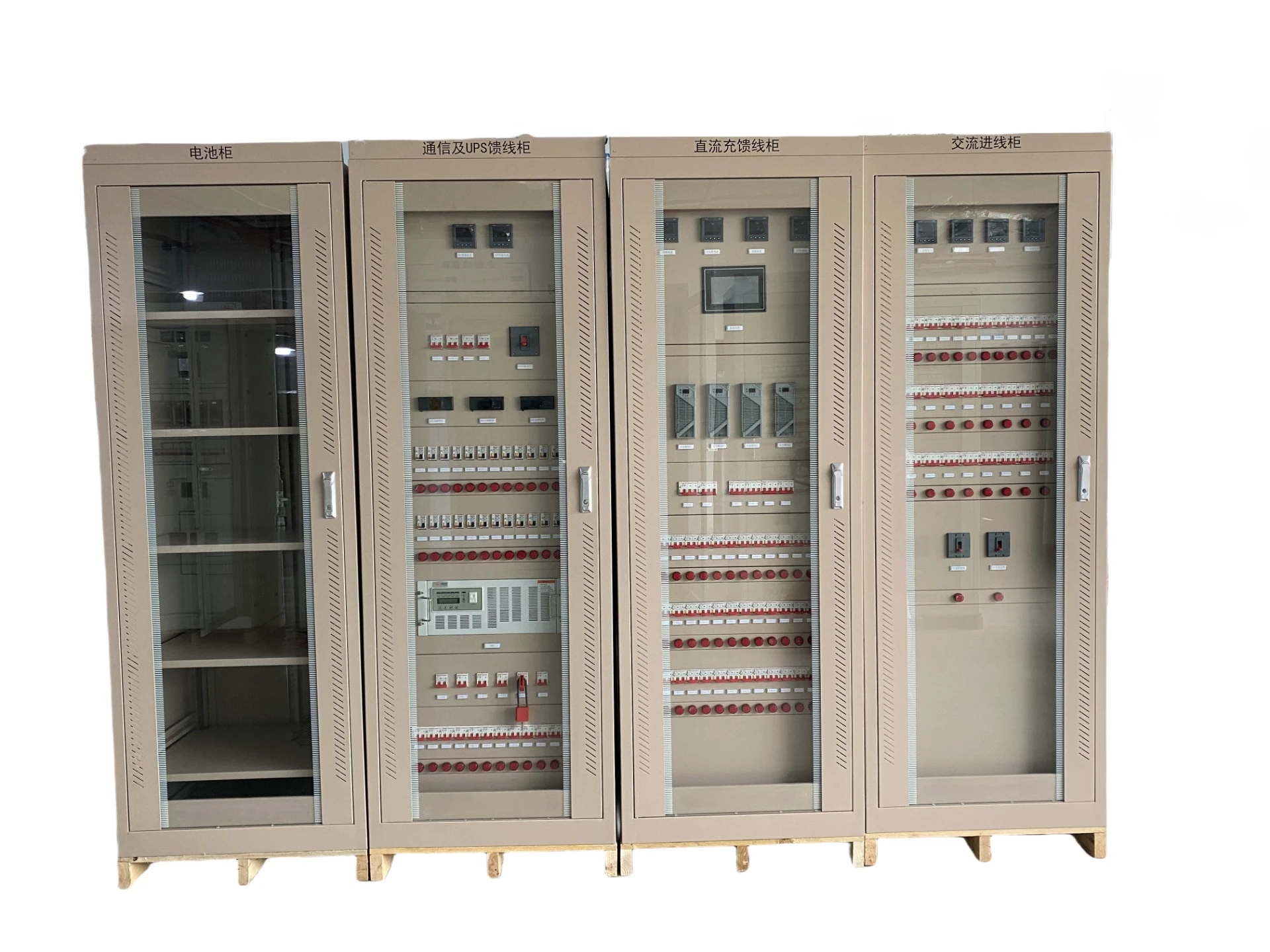
Ago . 24, 2025 01:20 Back to list
Intelligent Energy Management: Optimize & Save Power Smartly
Introduction to Intelligent Energy Management
In the rapidly evolving landscape of industrial and commercial operations, the strategic optimization of energy consumption is no longer merely an option but a critical imperative. The concept of intelligent energy management stands at the forefront of this transformation, leveraging advanced technologies to monitor, analyze, and control energy usage in real-time. This comprehensive approach is designed to enhance operational efficiency, reduce costs, minimize environmental impact, and ensure robust power reliability.
Modern industrial processes, critical infrastructure, and even large-scale commercial buildings demand sophisticated solutions to navigate complex energy grids, fluctuating demands, and the integration of renewable sources. An effective intelligent energy management strategy moves beyond simple metering, incorporating AI-driven analytics, predictive modeling, and automated control systems to achieve dynamic optimization across diverse loads and sources. This article delves into the core aspects of this critical technology, from underlying principles and technical specifications to real-world applications and demonstrable advantages for B2B stakeholders.
Industry Trends Shaping Intelligent Energy Management
Several macro and micro trends are accelerating the adoption and sophistication of intelligent energy management solutions:
- Digitalization and IoT Integration: The proliferation of IoT sensors and smart devices enables granular data collection from every facet of an energy ecosystem. This data feeds into centralized platforms, providing unprecedented visibility and control. According to recent reports, the global IoT in energy market is projected to reach over $35 billion by 2026, underscoring this trend.
- Decentralization of Energy Systems: The rise of distributed energy resources (DERs), including solar PV, wind turbines, and energy storage systems, necessitates intelligent coordination. Intelligent energy management systems are crucial for balancing these disparate sources, managing grid stability, and enabling peer-to-peer energy trading.
- Focus on Sustainability and Decarbonization: Businesses are under increasing pressure to reduce their carbon footprint and meet ESG (Environmental, Social, and Governance) targets. Advanced energy management systems provide the tools to optimize renewable energy usage, reduce reliance on fossil fuels, and achieve greater energy efficiency.
- Regulatory Compliance and Energy Efficiency Mandates: Governments worldwide are enacting stricter regulations regarding energy consumption and emissions. Intelligent systems help organizations comply with these mandates, often qualifying for incentives and subsidies for energy-saving initiatives.
- Artificial Intelligence and Machine Learning: AI/ML algorithms are transforming predictive maintenance, demand forecasting, and real-time optimization. These technologies can identify anomalous energy consumption patterns, predict equipment failures, and automatically adjust settings for peak efficiency.
- Enhanced Resilience and Grid Stability: With increasing climate-related challenges and cyber threats, grid resilience is paramount. Advanced intelligent energy management solutions, particularly those integrating home energy storage systems or industrial-scale battery storage, provide backup power and contribute to overall grid stability during outages or peak demand.
These trends collectively underscore the critical need for sophisticated energy management solutions that can adapt to dynamic conditions and deliver measurable value.
Technical Specifications: Intelligent Integrated Power Supply
Our Intelligent Integrated Power Supply is a cornerstone of effective intelligent energy management. Designed for robust performance and seamless integration, it provides reliable, efficient power conversion and distribution crucial for critical industrial and commercial applications.
Key Features and Parameters:
| Parameter | Specification |
|---|---|
| Input Voltage Range | AC 380V ±15% (3-phase 4-wire) / DC 220V ±10% |
| Output Voltage (DC) | 24V DC to 220V DC (Configurable, e.g., 48V, 110V, 220V) |
| Output Current | Up to 2000A (modular design for scalability) |
| Efficiency | ≥ 96% (at full load) |
| Power Factor | ≥ 0.99 (active PFC) |
| Harmonic Distortion (THDi) | < 5% |
| Communication Interface | RS485, Ethernet (Modbus TCP/IP, SNMP, IEC 61850) |
| Operating Temperature | -25°C to +55°C |
| Certifications | CE, RoHS, ISO 9001, ISO 14001 |
| Protection Features | Over-voltage, under-voltage, over-current, short-circuit, over-temperature, lightning protection |
| Service Life | ≥ 20 years (main components), ≥ 10 years (battery bank, application dependent) |
These specifications highlight the unit's capability to deliver stable, high-quality power essential for maintaining uptime and optimizing energy usage in demanding industrial settings. The modular design ensures scalability and ease of maintenance, supporting long-term operational efficiency.
Application Scenarios
The versatility of an advanced intelligent energy management system allows for its deployment across a multitude of critical B2B sectors, delivering tangible benefits tailored to specific operational demands.
Target Industries:
- Petrochemical Industry: Ensuring stable power for critical processes, safety systems, and instrumentation where downtime can lead to significant financial losses and safety hazards. Provides resilience against grid disturbances.
- Metallurgy: Powering high-intensity processes like arc furnaces and electrolysis, where precise voltage and current control are crucial for product quality and energy efficiency. Mitigation of power fluctuations.
- Water Supply & Drainage: Maintaining uninterrupted operation of pumps, control valves, and SCADA systems, essential for public health and environmental protection. Critical for remote or unreliable grid locations.
- Data Centers: Providing ultra-reliable DC power for servers and cooling systems, minimizing PUE (Power Usage Effectiveness) and ensuring continuous data availability. Integration with UPS systems for layered redundancy.
- Telecommunications: Powering base stations, switching centers, and communication infrastructure, especially in remote areas or where grid stability is compromised. Supports both AC and DC loads efficiently.
- Renewable Energy Integration: Acting as a buffer and converter for solar, wind, and battery storage systems, optimizing energy flow and maximizing self-consumption or grid injection. Essential for grid-tied and off-grid solutions, including home energy storage systems for larger residential or small commercial applications.
Typical Application Scenarios:
- Peak Shaving and Load Shifting: Utilizing stored energy during peak tariff hours and recharging during off-peak times, significantly reducing electricity bills.
- Demand Response Participation: Automatically reducing or shifting loads in response to grid signals, earning incentives from utility providers.
- Microgrid Management: Orchestrating energy flow between distributed generation, storage, and loads within an isolated or grid-connected microgrid.
- Uninterruptible Power Supply (UPS) for Critical Loads: Providing seamless backup power during grid outages, ensuring continuous operation for vital equipment.
- Optimized Charging/Discharging of Battery Energy Storage Systems (BESS): Intelligent algorithms maximize battery lifespan and performance based on real-time data and predictive analytics.
The adaptable nature of our intelligent integrated power supply ensures that organizations can implement comprehensive intelligent energy management strategies tailored to their specific operational needs and regulatory environments.

Technical Advantages and Performance
Our solutions offer distinct technical advantages that position them as leaders in the intelligent energy management domain:
- Superior Energy Efficiency: With conversion efficiencies exceeding 96%, our systems significantly reduce energy losses, leading to substantial operational cost savings and a lower carbon footprint. This directly translates to reduced TCO (Total Cost of Ownership).
- Enhanced Reliability and Uptime: Features like N+1 redundancy, hot-swappable modules, and advanced diagnostics minimize downtime. The robust design ensures stable operation even under harsh industrial conditions, protecting critical loads from power disturbances.
- Advanced Communication and Control: Compatibility with standard industrial communication protocols (Modbus, SNMP, IEC 61850) allows for seamless integration with existing SCADA, DCS, or building management systems. This enables centralized monitoring and remote control, crucial for an effective intelligent energy management system.
- Intelligent Battery Management: Optimized charging and discharging algorithms extend battery life, reducing replacement costs and maintenance requirements. Real-time battery health monitoring and state-of-charge (SOC) prediction enhance system reliability.
- Scalability and Flexibility: Modular architecture allows for easy expansion as energy demands grow. Systems can be customized to various voltage and current requirements, offering unparalleled flexibility for diverse applications, from large industrial facilities to a sophisticated home energy storage system.
- Robust Environmental Protection: Designed to withstand challenging environments, our products feature high ingress protection (IP) ratings, excellent thermal management, and corrosion-resistant components, ensuring long-term performance and reduced maintenance, especially in industries like petrochemicals and metallurgy.
- Cost-Effective Operation: Beyond energy savings, the long service life of over 20 years for main components, coupled with minimal maintenance needs and proactive fault detection, ensures a low lifecycle cost.
These technical merits underpin our commitment to delivering high-performance, durable, and intelligent solutions that empower businesses to optimize their energy ecosystems effectively.
Process Flow: Manufacturing of Intelligent Energy Management Systems
The manufacturing of our Intelligent Integrated Power Supplies adheres to stringent quality control and precision engineering, ensuring each unit meets the highest industry standards. Our process emphasizes durability, performance, and reliability.
Key Stages of Production:
- Material Sourcing and Quality Inspection:
- Materials: High-grade silicon carbide (SiC) semiconductors, advanced lithium-ion or lead-acid battery cells (for storage components), corrosion-resistant aluminum alloys and stainless steel for enclosures, high-purity copper for busbars and windings.
- Standards: All raw materials undergo rigorous inspection against ISO 9001 quality guidelines and specific material certifications. Suppliers are required to meet environmental compliance standards (e.g., RoHS, REACH).
- Component Manufacturing and Sub-Assembly:
- PCB Fabrication: Automated SMT (Surface Mount Technology) lines for precise placement of components on multilayer PCBs. In-circuit testing (ICT) for defect detection.
- Power Module Assembly: Advanced power semiconductors are integrated into robust modules. Processes include ultrasonic welding and precision soldering, followed by thermal cycling tests.
- Enclosure Manufacturing: CNC machining and laser cutting for precise fabrication of metal chassis components. Powder coating or electroplating for enhanced corrosion resistance (especially for petrochemical and water treatment industries).
- System Integration and Wiring:
- Modules, control units, and communication interfaces are integrated into the enclosure. High-standard wiring harnesses are used, adhering to electrical safety standards (e.g., ANSI/UL).
- Emphasis on modularity and accessibility for future maintenance or upgrades.
- Software Loading and Configuration:
- Proprietary firmware and intelligent energy management system software are loaded. Initial parameter configuration and network setup are performed.
- Rigorous software validation to ensure all control algorithms and communication protocols function correctly.
- Comprehensive Testing and Quality Assurance:
- Functional Testing: Full load and partial load testing, efficiency measurement, power factor verification.
- Environmental Testing: Temperature cycling, humidity tests, vibration tests to simulate real-world operational conditions (IEC 60068 standards).
- Electrical Safety Testing: Dielectric strength (Hi-Pot), insulation resistance, ground bond tests according to CE and UL standards.
- EMC/EMI Testing: Ensuring compliance with electromagnetic compatibility standards (e.g., EN 61000).
- Long-Term Burn-in Test: Operating units for an extended period (e.g., 24-72 hours) under various load conditions to detect early failures.
- Final Inspection and Packaging:
- Visual inspection for aesthetic and build quality. Documentation check.
- Secure packaging designed for international shipping, protecting against transit damage.
Schematic Steps (Simplified):
1. Raw Material Procurement & Inspection (ISO 9001)
|
V
2. Component Fabrication (PCBs, Power Modules, Enclosures via CNC)
|
V
3. System Assembly & Wiring (Electrical Safety Adherence)
|
V
4. Software & Firmware Loading (Intelligent Energy Management Core)
|
V
5. Rigorous Testing (Functional, Environmental, Electrical Safety, EMC, Burn-in)
|
V
6. Final Quality Check & Packaging (CE, RoHS Certified Product)
This meticulous process ensures that every Intelligent Integrated Power Supply delivers optimal performance and a long service life, capable of meeting the demands of critical industrial applications with advantages such as enhanced energy saving and superior corrosion resistance due to material selection and surface treatments.
Vendor Comparison: Key Differentiators in Intelligent Energy Management Solutions
When selecting an intelligent energy management system, evaluating vendors based on key technical and service differentiators is paramount. While specific competitors are not listed, a generalized comparison highlights the critical features and support structures that define leading solutions in the market.
| Feature Category | Standard Offering (Competitor A) | Advanced Offering (Our Solution) |
|---|---|---|
| Efficiency | Typically 90-94% | ≥ 96%, utilizing SiC components |
| Scalability | Limited module options, fixed configurations | Modular, hot-swappable design (up to 2000A), easy expansion |
| Communication Protocols | Basic RS485 (Modbus RTU) | Comprehensive: RS485, Ethernet (Modbus TCP/IP, SNMP, IEC 61850) |
| Environmental Adaptability | Standard industrial (0-40°C, IP20) | Wide range (-25°C to +55°C), high IP rating (IP54/65 options), corrosion-resistant |
| Battery Management | Basic charging/discharging, limited monitoring | AI-driven optimization, real-time health monitoring, predictive analytics for lifespan extension |
| Cybersecurity | Basic network security | Multi-layered security protocols, encrypted communication, robust access controls |
| Certifications | Local safety standards only | CE, RoHS, ISO 9001, ISO 14001, IEC compliance |
This comparison highlights the importance of comprehensive features, robust engineering, and advanced intelligence in an effective intelligent energy management system. Our commitment to high efficiency, broad compatibility, and environmental resilience provides a superior solution for demanding B2B applications.
Customized Solutions
Recognizing that no two industrial or commercial operations are identical, we specialize in delivering highly customized intelligent energy management solutions. Our engineering team works closely with clients to design systems that precisely meet their unique requirements, operational constraints, and long-term strategic goals.
- Tailored Power Output & Configuration: Custom voltage and current configurations, AC/DC hybrid setups, and specific redundancy levels (e.g., N+2) to match exact load profiles and criticality.
- Integration with Existing Infrastructure: Development of bespoke communication interfaces and software modules to ensure seamless integration with legacy SCADA, DCS, or EMS platforms.
- Environmental Hardening: Specialized enclosures with enhanced IP ratings (e.g., IP65, IP67) for extreme conditions, advanced cooling systems, and materials resistant to specific chemical or corrosive agents prevalent in the petrochemical or mining industries.
- Custom Energy Storage Solutions: Integration of specific battery chemistries (e.g., LiFePO4, VRLA) and capacities to optimize for cycle life, discharge rate, or operational temperature range, critical for a robust home energy storage system or large industrial BESS.
- Advanced Control Logic & Algorithms: Custom programming for complex demand response strategies, predictive maintenance schedules based on specific equipment characteristics, and optimal dispatch of distributed energy resources.
- Dedicated Project Management: From initial consultation and site assessment to design, manufacturing, installation, and commissioning, a dedicated project manager ensures smooth execution and adherence to timelines.
Our expertise extends beyond off-the-shelf products, providing clients with a truly optimized and future-proof energy management ecosystem.
Application Case Studies
Case Study 1: Large-Scale Petrochemical Plant
Client: A major petrochemical processing facility in Southeast Asia.
Challenge: The plant faced frequent voltage sags and momentary outages, leading to critical process interruptions, equipment damage, and significant production losses. Their existing DC power system lacked real-time monitoring and advanced diagnostic capabilities.
Solution: We deployed a customized Intelligent Integrated Power Supply system providing 220V DC output, with a total capacity of 1500A, featuring N+2 redundancy. The system incorporated highly corrosion-resistant enclosures (IP65 rated) and advanced communication modules (IEC 61850) for seamless integration with their Distributed Control System (DCS). AI-driven battery management ensured optimal performance of the integrated lead-acid battery bank.
Results:
- 99.999% uptime for critical control systems over 3 years of operation.
- 20% reduction in energy consumption for auxiliary systems through intelligent load balancing and optimized charging.
- Elimination of 95% of process interruptions attributed to power supply issues.
- Reduced maintenance costs by 15% due to proactive monitoring and diagnostics, extending equipment lifespan.
"The implementation of this intelligent energy management system has revolutionized our operational stability. The real-time visibility and robust power supply have been instrumental in maintaining continuous production and enhancing safety protocols. It's an investment that paid for itself within the first two years." - Operations Manager, Petrochemical Plant.
Case Study 2: Municipal Water Treatment Facility
Client: A large municipal water and wastewater treatment plant in a coastal region.
Challenge: The facility experienced high electricity costs due to continuous pump operation and susceptibility to grid instability during severe weather, risking public health and environmental discharge compliance.
Solution: We provided an intelligent energy management system integrated with a 500kW/1MWh lithium-ion battery energy storage system. The solution included our Intelligent Integrated Power Supply, designed to manage bidirectional power flow, optimize pump scheduling based on real-time electricity prices, and provide emergency backup power. The system was housed in an IP54-rated, anti-corrosion cabinet suitable for the humid, saline environment.
Results:
- 30% reduction in peak demand charges through effective peak shaving strategies.
- 18% overall reduction in electricity bills by optimizing energy arbitrage (buying low, selling/using high).
- Seamless transition to backup power during 5 major grid outages over 18 months, preventing any disruption to water supply.
- Enhanced operational transparency with detailed energy consumption reports for regulatory compliance.

Frequently Asked Questions (FAQ)
Q1: What is the typical lead time for an Intelligent Integrated Power Supply?
A1: Standard configurations typically have a lead time of 6-8 weeks from order confirmation. Customized solutions may require 10-14 weeks, depending on the complexity of design and sourcing of specialized components. We provide precise lead time estimates at the quoting stage, with fulfillment managed by our dedicated logistics team to ensure timely delivery worldwide.
Q2: What warranty is provided with the Intelligent Integrated Power Supply?
A2: We offer a standard 2-year warranty on the Intelligent Integrated Power Supply unit, covering defects in materials and workmanship. Extended warranty options for up to 5 years are available. Battery components typically come with a separate manufacturer's warranty, usually 5-10 years, depending on the battery type and application. Our commitment ensures reliable performance and peace of mind.
Q3: What kind of after-sales support can we expect?
A3: Our comprehensive after-sales support includes 24/7 technical assistance via phone and email. We offer remote diagnostics, on-site troubleshooting by certified engineers, preventative maintenance contracts, and readily available spare parts. We also provide regular software updates and training programs for your operational staff to ensure optimal utilization of your intelligent energy management system.
Q4: How does your system integrate with existing control infrastructure?
A4: Our Intelligent Integrated Power Supply is designed for high interoperability. It supports industry-standard communication protocols such as Modbus RTU/TCP, SNMP, and IEC 61850. This allows for seamless integration with most existing SCADA, DCS, or building management systems (BMS), ensuring that your intelligent energy management solution acts as a cohesive part of your overall operational framework.
Conclusion
The adoption of advanced intelligent energy management solutions is no longer a luxury but a strategic necessity for businesses aiming to thrive in an increasingly competitive and energy-conscious world. Our Intelligent Integrated Power Supply offers a robust, efficient, and scalable foundation for comprehensive energy optimization, delivering tangible benefits across diverse industrial and commercial sectors. By prioritizing innovation, reliability, and customer-centric customization, we empower organizations to achieve significant operational savings, enhance sustainability, and ensure unparalleled power reliability.
Authoritative References
- International Organization for Standardization (ISO). ISO 9001:2015 Quality management systems – Requirements.
- International Electrotechnical Commission (IEC). IEC 61850: Communication networks and systems for power utility automation.
- U.S. Department of Energy (DOE). Energy Information Administration (EIA) Annual Energy Outlook.
- Grand View Research. IoT in Energy Market Size, Share & Trends Analysis Report, 2020-2027.
- Institute of Electrical and Electronics Engineers (IEEE). IEEE 1547 Standard for Interconnection and Interoperability of Distributed Energy Resources with Associated Electric Power Systems Interfaces.
This is the last article
-
Intelligent Energy Management: Optimize & Save Power Smartly
NewsAug.24,2025
-
Boost Efficiency with Smart EMS & Energy Management Systems
NewsAug.23,2025
-
Smart Energy Management System | Save Costs & Boost Efficiency
NewsAug.22,2025
-
Advanced Energy Management Systems: Optimize & Save Costs
NewsAug.19,2025
-
Smart Energy Management System: Control & Monitor Usage
NewsAug.18,2025
-
EMS for Advanced Energy Management & Storage
NewsAug.17,2025


